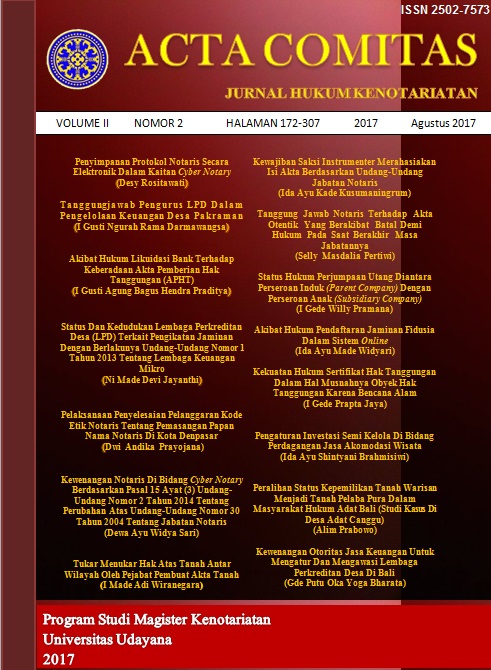PENYIMPANAN PROTOKOL NOTARIS SECARA ELEKTRONIK DALAM KAITAN CYBER NOTARY
English
Abstract
The notary protocol is the state archives that must be stored and maintained by a notary. Storage of electronic notary protocol is possible as a solution to problems of security, maintenance costs, and the size of land required. In the meantime, the Article 16 of paragraph (1) letter b of Amended Law on Notary (Amended UUJN) and the explanation only establishes the obligation of notaries in running their position of making deeds in the form of minutes of the deed and to save them as part of the protocol of notaries in its original form to keep the authenticity of the certificates , This raises the vacuum of norms related to the storage arrangements of electronic notary protocol. Therefore, the problems raised in this thesis are what the urgency of the electronic storage of notary protocol in terms of cyber Notary, what is the notary protocol electronic storage mechanism and what is the power of evidence of the electronic storage of notary protocol.
The type of research in this thesis is a normative legal research as a result of the vacuum of norms. The legal materials collection technique used was the technique of literature study card system.
The results showed that electronically stored notarial protocol is important to do given the task of a notary as public officials who have the task of serving the public in the field of civil cases, so the state should make strict rules about electronic storage of notarial protocols in relation to cyber Notary. The mechanism is by using the transfer of media into digital form or scanning. The strength of evidence of electronically stored notarial protocol in the field of civil law only serves as a back up, not as a copy of which has binding force because it is not yet eligible for the authenticity of the document as provisioned in the Article 1 paragraph 7 of Amended UUJN/ Law on Notary and Article 1868 of Civil Law Codes and in the field of criminal procedure law i.e. that it can be evidence of indication when dealing with the contents of other evidence.
Downloads

This work is licensed under a Creative Commons Attribution 4.0 International License.






